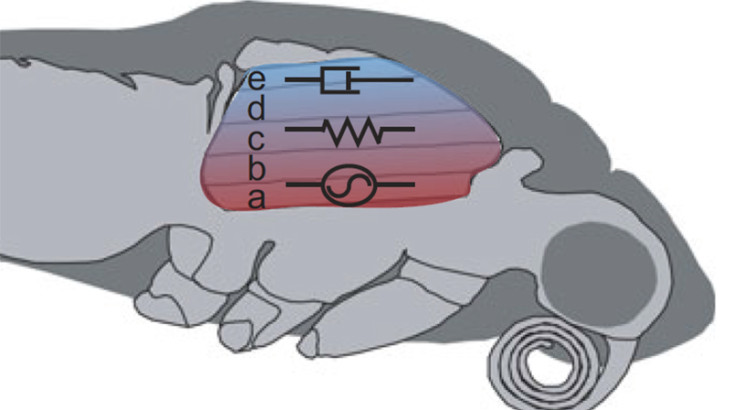Temperature is one of the most important variables affecting an animal’s physiology. Animal’s thermoregulate in a variety of ways from behaviorally seeking out warmer or cooler parts of their habitat to having extensive heat exchange strategies in their circulatory systems. Large moths like Manduca sexta typically spend the first moments before flight performing a behavior called “shivering” where they beat their wings at approximately half amplitude and with increasing frequency. The contraction of their large flight muscles during shivering produces large amounts of heat which warm up their body temperature and has been hypothesized to bring the muscles to a temperature enabling flight. However, the body and the even the muscles themselves do not warm uniformly. In fact, there is a gradient of 5-10 degrees C between the outer-most (dorsal & cooler) subunit of the large downstroke muscles and the inner-most (ventral and warmer) subunit. I worked with Dr. Nicole George to show that these subunits would normally all behave similarly if they are at the same temperature. However, the temperature gradient is sufficient to change the work done in the different subunits. The cooler subunits of the muscles act like springs and the warmer subunits act like motors. the As a result, the moth may be able to better meet the intense power demands of flight by using parts of its large flight muscle to produce energy and parts to store and return energy.
The contraction of their large flight muscles during shivering produces large amounts of heat which warm up their body temperature and has been hypothesized to bring the muscles to a temperature enabling flight. However, the body and the even the muscles themselves do not warm uniformly. In fact, there is a gradient of 5-10 degrees C between the outer-most (dorsal & cooler) subunit of the large downstroke muscles and the inner-most (ventral and warmer) subunit. I worked with Dr. Nicole George to show that these subunits would normally all behave similarly if they are at the same temperature. However, the temperature gradient is sufficient to change the work done in the different subunits. The cooler subunits of the muscles act like springs and the warmer subunits act like motors. the As a result, the moth may be able to better meet the intense power demands of flight by using parts of its large flight muscle to produce energy and parts to store and return energy.
What was particularly surprising though was how not only the average body temperature, but the variations in temperature across the body could have functionally important consequences for locomotion. In fact, the temperature gradient also changes how each of the subunits responses to timing changes in neuromuscular activation. Therefore, the highly precise timing strategies that a moth uses for turning (see this project) may further interact with the temperature to modify how each muscle’s subunit contribute to flight control.
